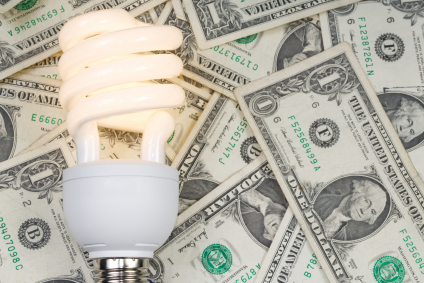Economic sense

Green affordable housing costs less than conventional residential development over the long run and can even reduce construction costs. Green, high performance techniques, systems, and materials will deliver more efficient, durable, and therefore more valuable housing. The returns accrue to owners, residents, neighbors, local governments, and the regional economy.
Low cost, life long
While adopting high performance green building techniques and materials can take additional time at the outset, they will pay off in lower construction costs and much lower operations and maintenance costs over the long term. Life-cycle cost analysis and now many existing green developments continue to prove that building green generates life-long savings.
Lower construction costs
Building green now costs less than ever -- only one to four percent more than a conventional residential development, according to a recent study. That difference represents the investment required to ensure high-quality design and materials. The resulting coordinated approach and design efficiencies will cut construction expenses and recoup much of the initial cost before the project is even complete. Savings come from reuse and recycling instead of conventional waste disposal, efficient design and new techniques that reduce materials use, and fewer change orders. Builders who gain experience with high performance methods and materials will lower their costs while delivering a premium product.
Go to the Lower Construction Costs page in the Building Pros section.
Reduced operating costs
The cost of operating and maintaining a building is three to four times the price of construction. Efficiency improvements and durable design make green buildings significantly cheaper to care for than conventional buildings. Utility savings add up for owners and residents--high performance design cuts electricity and water use by approximately 30 percent. Maintenance savings are across the board: hardy landscaping, fewer resident complaints, more durable materials, and no moisture or indoor air quality problems. It's no surprise that insurance companies are beginning to offer discounted coverage for high performance buildings. Go to the Improved Life-cycle Costs page.
Sustaining the economy
Your commitment to green affordable housing strengthens the regional economy by creating new job opportunities in green construction, opening a market for green building materials, and helping residents save money on utility bills. Go to the Sustaining the Economy page.
Truly affordable housing
Because energy and fuel costs have risen with real estate prices in recent years, building green, efficient homes for working class families goes a long way towards keeping those homes affordable. When you respond to the need for high performance, low-cost housing near commercial centers, you make it possible for critical municipal workers like police officers, nurses, and teachers to live near their jobs while reducing traffic congestion for everyone.
Powering the economy with efficiency
Investing in energy efficiency creates almost twice as many jobs as the same amount invested in a gas-fired power plant. Residents benefit from lower utility bills, and those savings translate into consumer spending (in addition to on-time rent or mortgage payments). The approximately 30 percent in overall energy savings achieved by green buildings also brings down the market price of electricity, generating savings for all utility customers in the region. Go to the Energy Efficiency page.
Taking the pressure off public services
Just as reduced electricity demand improves the performance of the power grid and transit-accessible housing eases traffic, water efficient homes achieve savings in treatment and distribution costs. Sewer systems and local rivers and streams also benefit when developments reduce water use and control stormwater runoff by keeping more water on site with smart landscaping. Since improved indoor air quality reduces respiratory ailments such as asthma, green housing should also ease pressure on the medical system.
Growing green businesses
Each green project creates jobs by growing the market for a range of services and industries, including energy rating, more rigorous building operations and maintenance, green cleaning, and the manufacturing, salvage, and recycling of building materials. Local businesses are taking advantage of this burgeoning market, and green developments are attracting clean technologies firms to cities and regions that value sustainability. Policies that support green building help local businesses gain experience in cutting edge design and construction techniques and benefit from their connections to regional manufacturers and distributors and to the community. Go to the Building New Industries page.
In this Section:
Improved life-cycle costs
The green payoff Construction costs represent less than 20 percent of the total costs of a building. Operating costs comprise the majority of the overall life-cycle costs. Green building significantly...
Sustaining the economy
Each green affordable housing unit strengthens the economy by creating sustainable, healthy living spaces, building a market for green products, and investing in a future where residents will spend their...
Building new industries
Green building blocks Each green building project creates jobs by growing the market for a wide range of products and services, including high performance building materials, energy rating services, weatherization,...

